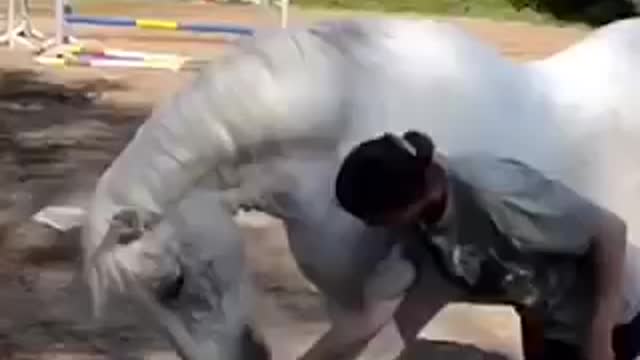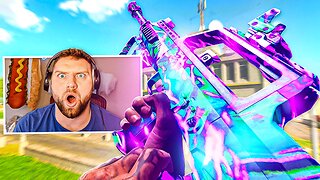Premium Only Content

How To Survive A Horse
How To Survive A Horse
The horse, a prey animal, depends on flight as its primary means of survival. Its natural predators are large animals such as cougars, wolves, or bears, so its ability to outrun these predators is critical. As humans, we need to understand their natural flightiness in order to fully understand horses.
Horses are one of the most perceptive of all domestic animals. Since they are a prey species, they must be able to detect predators. A stimulus unnoticed by humans is often cause for alarm for horses; as riders and trainers we commonly mistake this reaction for “spookiness” or bad behavior.
The horse has a very fast response time. A prey animal must react instantly to a perceived predator to be able to survive.
Horses can be desensitized from frightening stimuli. They need to learn quickly what is harmful (e.g., lion, cougar, etc.) and what is harmless (e.g., tumbleweeds, birds, a discolored rock, etc.), so they do not spend their whole lives running away.
Horses forgive, but do not forget. They especially remember bad situations! This is why it is critical to make the horse’s first training experience a positive one.
Horses categorize most experiences in one of two ways: a) something not to fear, so ignore or explore it, and b) something to fear, so flee. Therefore, when presenting anything new, the horse needs to be shown that ‘a’ is the case. Again, it is important to make all training experiences positive.
Horses are easily dominated. The horse is a herd animal where a dominance hierarchy is always established. If done correctly, human dominance can easily be established during training without causing the horse to become excessively fearful.
Horses exert dominance by controlling the movement of their peers. Horses accept dominance when: a) we or another animal cause them to move when they prefer not to, and b) we or another animal inhibit movement when they want to flee. Examples include using a round pen, longe line, or hobbles; or the more dominant horse in the field chasing the less dominant one away.
The body language of a horse is unique to the equine species. As a highly social animal, the horse communicates its emotions and intents to its herd mates through both vocalization and body language. A person handling horses needs to be able to read the horse’s body language to be an effective trainer.
The horse is a precocial species, meaning that the newborn foals are neurologically mature at birth. They are most vulnerable immediately after birth so they must be able to identify danger and flee if necessary.
-
 LIVE
LIVE
Dear America
1 hour agoNo More IRS!! Tariffs Bring In Over $500 BILLION! + Taylor Swift Got ENGAGED… This Is A Nightmare!!
3,378 watching -
 LIVE
LIVE
Wendy Bell Radio
5 hours agoTrump Cracks The Barrel
8,408 watching -
 LIVE
LIVE
Badlands Media
9 hours agoBadlands Daily: August 27, 2025
2,645 watching -
 LIVE
LIVE
Law&Crime
1 hour agoLIVE: Adelson Matriarch Murder Trial — FL v. Donna Adelson — Day 4
939 watching -
 LIVE
LIVE
Major League Fishing
5 days agoLIVE! - Fishing Clash Team Series: Challenge Cup - Day 4
113 watching -
 1:03:42
1:03:42
Crypto Power Hour
2 hours agoWhat Coins Are The Backbone of The New Digital Revolution?
555 -
 LIVE
LIVE
LFA TV
3 hours agoLFA TV ALL DAY STREAM - WEDNESDAY 8/27/25
5,838 watching -
 1:22:55
1:22:55
Game On!
18 hours ago $2.62 earnedBREAKING NFL NEWS: Taylor Swift and Travis Kelce Are Engaged!
29.9K12 -
 41:04
41:04
Coin Stories with Natalie Brunell
1 day agoCooking, Culture & Crypto: Norma Chu’s Food Empire Turns Bitcoin Treasury
24.8K -
 LIVE
LIVE
JuicyJohns
1 hour ago $0.15 earned🟢#1 REBIRTH PLAYER 10.2+ KD🟢
55 watching